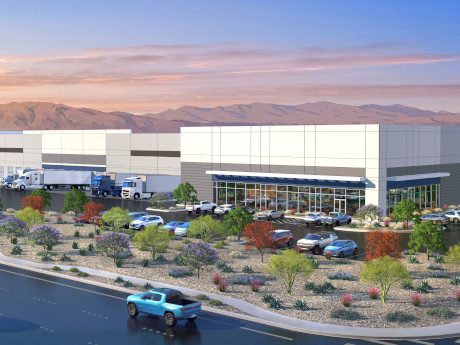— By Greg Tassi, vice chair, and Jason Griffis, senior director, Cushman & Wakefield —
Southern Nevada continues to distinguish itself through economic diversity. Sports and entertainment, along with a robust industrial real estate market, play a key role in keeping Las Vegas relevant. Formula 1 Racing, the MSG Sphere, MLB’s Athletics and recent discussions around a potential NBA expansion team add to the local excitement. Meanwhile, a compelling industrial real estate market continues to attract and retain globally recognized businesses.
The industrial segment in the Las Vegas Valley remains a safe bet for national developers and institutional capital partners, many of which have a healthy appetite to either enter the market or expand their holdings. Land scarcity is the primary barrier to entry for new groups entering the market. Infill sites have become increasingly scarce with very few parcels of more than five acres suitable for industrial development.
The bulk of the new inventory will continue to push to the periphery of the Valley, including Sloan and Jean to the south, El Dorado Valley to the southeast and Apex to the north — home to Prologis’ recent 879-acre purchase. Henderson’s recently annexed El Dorado Valley attracted attention with a 94-acre acquisition by DIV Industrial, while Amazon secured an impressive 300-acre swath within the emerging submarket.
Las Vegas’ industrial development pipeline currently weighs in at just over 42 million square feet of planned and under-construction projects. There is about 16 million square feet of industrial product in various stages of construction scheduled for completion by January 2025. This will be a new record for completions in a calendar year, which will normalize vacancy and stabilize lease rates.
However, with some delayed projects slated to start construction in the second half of 2024, this will again put pressure on inventory in the latter half of 2025 and into 2026.
Las Vegas experienced record absorption and construction completions in 2023. This was due to the vibrant and ever-expanding local economy and demand for West Coast logistics options looking to benefit from the favorable tax environment, strong labor analytics and low utility costs that Southern Nevada offers.
Although the market appears to be returning to a more sustainable pace, leasing activity remains strong with 30 percent of new construction projects pre-leased. Rising vacancy rates and mixed opinions around anticipated Fed cuts continue to frame the market narrative, while Nevada’s strong fundamentals and favorable tax policies highlight its prominence in the Western region.


